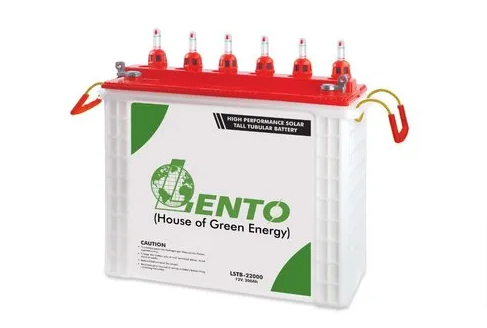How to Renovate a Lead Acid Battery?

How to Renovate a Lead Acid Battery?
Renovating a lead‑acid battery restores lost capacity by breaking down sulfate buildup, rebalancing cells, and refreshing the electrolyte—often recovering 70–90 % of original performance. This process involves safely assessing battery health, cleaning and desulfating plates (with pulse or equalization charging), adding distilled water (for flooded models), and performing controlled multi‑stage recharge and testing. Lento’s SMF/VRLA batteries eliminate watering and resist sulfation, while its low‑antimony tubular flooded models cut maintenance and extend cycle life. Distributors and workshops can turn renovation into a profitable service by bundling Lento’s premium kits, training, and support—offering clients cost savings, environmental benefits, and reliable power.
Introduction
Lead‑acid batteries degrade mainly through sulfation, stratification, and plate wear—but many can be rejuvenated instead of replaced. For workshops, fleets, and solar installers in Syria, offering battery renovation saves clients money and positions you as a full‑service provider. Below is a step‑by‑step guide to safely renovate flooded and SMF batteries, followed by an overview of Lento’s battery lines, their advantages, and B2B recommendations.
Common Renovation Techniques:
1. Safety Precautions
- PPE Required: Acid‑resistant gloves, apron, and goggles.
- Ventilation: Work in open air or ventilated area to avoid hydrogen buildup.
- Acid Handling: Have baking soda on hand to neutralize spills; keep a safe disposal container.
2. Assess Battery Condition
- Visual Check: Inspect for cracks, bulges, or leaks. Discard irreparable cases.
- Voltage Test: Measure open‑circuit voltage; under 10.5 V per 12 V battery signals deep discharge.
- Specific Gravity (Flooded Only): Use a hydrometer; readings below 1.200 kg/L indicate heavy sulfation.
3. Cleaning & Preparation
- Terminal Cleaning: Mix baking soda with water and scrub corrosion from posts and clamps.
- Exterior Wash: Rinse the case with mild detergent and water; dry thoroughly.
- Electrolyte Removal (Flooded Only): Carefully siphon out old acid into a neutralization container—never replace with plain water or DIY mixtures.
4. Desulfation Techniques
4.1 Pulse Desulfation
- Equipment: Pulse desulfator per Spaceflight Power methods
- Process: Connect for 24–48 hours to break down lead‑sulfate crystals without overcharging.
4.2 Equalization Charging
- Refill: Fill with factory‑recommended electrolyte or Lento’s pre‑measured acid pack.
- Charge: Bulk charge at 2.45 V/cell (for flooded) for 4 hours, then float at 2.25 V/cell to rebalance cell voltages.
5. Electrolyte Refresh & Water Top‑Up
- Flooded Batteries: After equalization, top up with distilled water to just above plate level.
- SMF/VRLA Batteries: No topping up needed; proceed directly to charging.
6. Controlled Multi‑Stage Recharge
- Bulk Stage: 14.4 V until current drops to C/20 rate (e.g., 7 A for a 150 Ah battery).
- Absorption Stage: Hold 13.8 V for 2 hours.
- Float Stage: Reduce to 13.2 V indefinitely to maintain full SoC.
7. Final Testing
- Capacity Test: Discharge at C/20 and measure runtime against rated amp‑hours.
- Voltage & Gravity Uniformity: Ensure cell voltages and gravities differ by no more than 0.02 kg/L and 0.1 V.
- Load Test: Use a 100 A load tester to verify cranking performance.
Lento Lead‑Acid Battery Types
|
Series |
Type |
Capacity (Ah) |
Key Advantage |
|
LSB‑SMF/VRLA |
Sealed Maintenance‑Free |
42–200 |
Zero watering, low self‑discharge |
|
TGS Tubular Flooded |
Deep‑Cycle Flooded |
150–200 |
High cycle life, deep‑discharge capable |
Advantages of Lento Batteries
- Durability: Hybrid alloy plates resist corrosion and stratification.
- Low Maintenance: SMF models require no water; flooded models need only distilled water every 6–12 months.
- Warranty & Support: Up to 36 months with full technical guidance.
- Eco-Friendly: Improved renovation techniques extend battery life and reduce recycling frequency.
B2B Recommendations
- Renovation Service Packages: Bundle desulfation, equalization, and testing—market as “Battery Health Checks.”
- Training & Kits: Offer Lento‑branded hydrometers, distilled water kits, and safety gear to partners.
- Maintenance Contracts: Sell annual or bi‑annual service plans for fleets and solar installations.
- Marketing Materials: Leverage Lento’s datasheets, “before and after” case studies, and co‑branded brochures to attract corporate clients.
Conclusion
Renovating lead‑acid batteries restores significant capacity, reduces replacement costs, and cuts environmental impact. By following safe desulfation, equalization, and controlled charging steps—and by leveraging Lento’s advanced battery designs—workshops and distributors in Syria can offer high‑value renovation services. This not only boosts margins but also strengthens customer loyalty in competitive automotive and solar markets.
Call to Action
Don’t let worn‑out batteries slow down your operations or leave your customers stranded. Now is the time to partner with Lento industry leaders in advanced lead‑acid technology to bring best‑in‑class battery renovation solutions and premium replacements to your market. Whether you’re expanding your B2B supply chain or offering value‑added maintenance services, Lento’s sealed maintenance‑free and low‑antimony tubular batteries deliver unmatched reliability, safety, and performance. Act today to secure exclusive distribution rights, elevate your service offerings, and keep your clients powered with confidence. Contact Lento now to discuss supply opportunities and transform your battery business.
Frequently Asked Questions (FAQs)
- Can every lead‑acid battery be renovated?
Only batteries without physical damage and with cell voltages above 1.0 V/cell qualify; severely sulfated or shorted batteries should be replaced. - How often should renovation be performed?
Annually for heavy‑use solar and telecom applications; every 2–3 years for standard automotive batteries. - Is acid replacement ever safe?
No—replacing acid risks incorrect concentration, plate damage, and voids warranties. Use controlled charging instead. - What equipment is essential for renovation?
A hydrometer, multi‑stage charger with equalization function, pulse desulfator (optional), distilled water, and PPE. - How long does the renovation process take?
Typically 2–3 days: 24–48 hours for desulfation plus 6–8 hours of controlled charging and testing.

